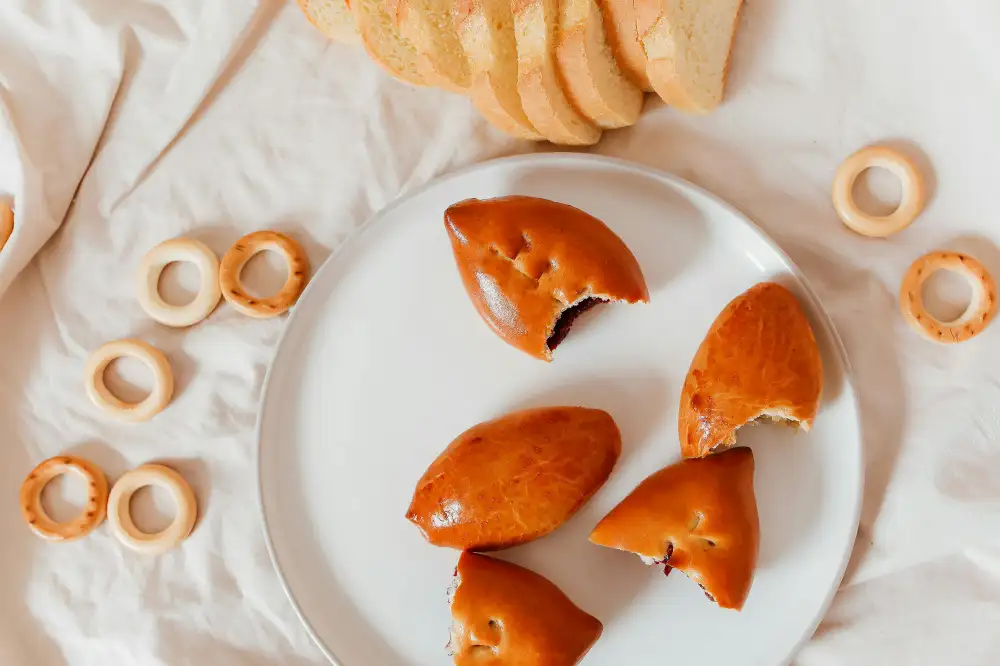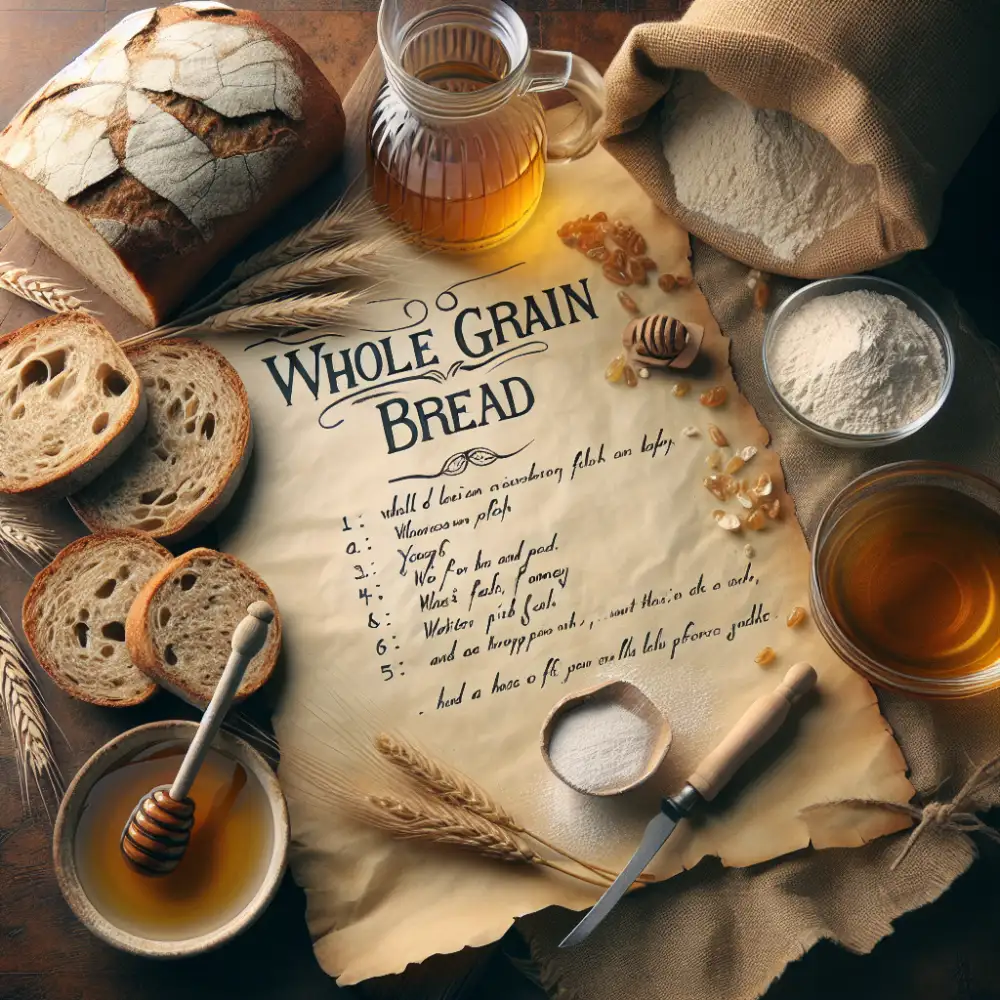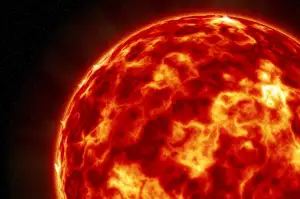Wholesome Delights: A Mouthwatering Whole Grain Bread Recipe for Health-Conscious Foodies

Whole grain bread has become increasingly popular among health-conscious foodies, and for good reason. Unlike refined white bread, which is stripped of its nutrients during processing, whole grain bread retains the entire grain kernel, making it a much healthier choice. Packed with fiber, vitamins, and minerals, whole grain bread not only satisfies your taste buds but also provides numerous health benefits. In this article, we will explore the wonders of whole grain bread and share a mouthwatering recipe that you can easily make at home. So get ready to embark on a flavorful journey through the world of wholesome delights!
Benefits of Whole Grain Bread
Whole grain bread is not only delicious but also packed with numerous health benefits. Here are some reasons why you should consider adding whole grain bread to your diet:
1. Nutrient-rich: Whole grain bread is made from whole grains that contain all parts of the grain, including the bran, germ, and endosperm. This means it retains important nutrients like fiber, vitamins (B vitamins, vitamin E), minerals (iron, magnesium), and antioxidants.
2. High in fiber: Fiber is essential for a healthy digestive system and can help prevent constipation. Whole grain bread contains more fiber than refined white bread, making it a great choice for those looking to increase their fiber intake.
3. Weight management: The high fiber content in whole grain bread helps you feel fuller for longer, reducing the chances of overeating. It can be a valuable addition to a weight management plan.
4. Heart-healthy: Studies have shown that consuming whole grains can lower the risk of heart disease by reducing cholesterol levels and improving heart health markers such as blood pressure and inflammation.
5. Diabetes prevention: Whole grain bread has a lower glycemic index compared to refined white bread, meaning it causes a slower rise in blood sugar levels after consumption. This makes it a better option for individuals at risk of or managing diabetes.
6. Improved digestion: The combination of fiber and nutrients in whole grain bread promotes healthy digestion and regular bowel movements.
Incorporating whole grain bread into your diet can provide these health benefits while still satisfying your taste buds with its delightful flavor and texture.
Ingredients for Whole Grain Bread Recipe
To make a delicious and nutritious whole grain bread, you will need the following ingredients:
1. Whole Wheat Flour: Choose high-quality whole wheat flour that is rich in fiber and nutrients. Avoid refined flours as they lack the nutritional value of whole grains.
2. Water: Use lukewarm water to activate the yeast and help the dough rise properly.
3. Yeast: Active dry yeast or instant yeast can be used to leaven the bread. Make sure it is fresh and active for best results.

4. Honey or Maple Syrup: These natural sweeteners add a touch of sweetness to balance out the nutty flavor of whole grains.
5. Olive Oil or Butter: Adding a small amount of fat helps to keep the bread moist and tender.
6. Salt: Enhances the flavor of the bread and helps regulate yeast activity.
7. Optional Ingredients: You can customize your whole grain bread by adding seeds like flaxseeds, sunflower seeds, or sesame seeds for extra crunch and nutrition.
Remember, using high-quality ingredients is essential to achieve a flavorful and wholesome loaf of whole grain bread.
| Feature | White Bread Recipe | Whole Grain Bread Recipe |
|---|---|---|
| Type of Flour | Refined white flour | Whole grain flour (e.g., whole wheat, whole spelt) |
| Fiber Content | Low | High |
| Nutrient Density | Lower (mostly carbohydrates) | Higher (vitamins, minerals, antioxidants) |
| Texture | Soft, fluffy | Denser, chewier |
| Taste | Mildly sweet | Nuttier, earthier |
1. Use fresh ingredients: Ensure that your whole grain flour, yeast, and other ingredients are fresh to achieve the best results.
2. Measure accurately: Accurate measurements are crucial in baking. Use a kitchen scale to measure the flour and other dry ingredients precisely.
3. Knead thoroughly: Whole grain bread requires thorough kneading to develop gluten and create a good texture. Knead the dough until it becomes smooth and elastic.
4. Allow proper rising time: Whole grain bread usually takes longer to rise compared to white bread. Be patient and give it enough time to rise properly for a light and airy loaf.
5. Maintain ideal temperature: Yeast is sensitive to temperature, so ensure your dough rises in a warm environment (around 80°F/27°C) for optimal fermentation.
6. Add moisture: Whole grains tend to absorb more moisture, so add slightly more water or liquid than you would with white bread recipes. This will prevent your loaf from being too dry.
7. Avoid over-baking: Whole grain bread can easily become dry if over-baked. Keep a close eye on the baking time and remove the loaf from the oven as soon as it turns golden brown.
8. Cool completely before slicing: Allow your whole grain bread to cool completely on a wire rack before slicing it. This will help retain moisture and prevent it from becoming gummy.

By following these tips, you'll be able to bake perfect whole grain bread every time, with a delicious taste and satisfying texture that will impress health-conscious foodies!
Variations and Additions to Enhance Whole Grain Bread
While whole grain bread is delicious on its own, you can enhance its flavor and texture by incorporating various ingredients. Here are some ideas to take your whole grain bread to the next level:
1. Seeds: Add a crunchy texture and nutty flavor by including seeds such as sunflower, pumpkin, flax, or sesame seeds. These seeds not only enhance the taste but also provide additional nutritional benefits.
2. Nuts: For an extra dose of protein and healthy fats, try adding chopped nuts like almonds, walnuts, or pecans to your whole grain bread dough. They will add a delightful crunch and richness to every bite.
3. Dried Fruits: To introduce a touch of sweetness and chewiness, consider incorporating dried fruits like raisins, cranberries, or apricots into your bread recipe. Make sure to chop them into smaller pieces before adding them to the dough.
4. Herbs and Spices: Experiment with different herbs and spices to infuse unique flavors into your whole grain bread. Rosemary, thyme, oregano, cinnamon, or cardamom can add depth and complexity to the overall taste profile.
5. Cheese: If you're a cheese lover, try mixing in grated cheese such as cheddar, Parmesan, or Gruyere for an indulgent twist on traditional whole grain bread. The cheese will melt during baking and create pockets of gooey goodness throughout the loaf.
Remember that when adding these variations or additions to your whole grain bread recipe, it's important not to overwhelm the natural flavors of the grains themselves. Start with small amounts and gradually increase as desired.
By experimenting with these enhancements, you can create a personalized version of whole grain bread that suits your taste preferences while still reaping all the health benefits it offers.
Serving and Storing Whole Grain Bread
Once your whole grain bread is baked to perfection, it's time to enjoy it! There are several ways you can serve and store your wholesome creation.
To serve, slice the bread into thick or thin slices, depending on your preference. You can enjoy it plain or with a spread of butter, jam, or honey. It also makes a delicious base for sandwiches or toast.
When it comes to storing whole grain bread, it's important to keep it fresh for as long as possible. To do this, wrap the loaf tightly in plastic wrap or place it in an airtight container. This will help prevent moisture loss and maintain its texture.
You can store whole grain bread at room temperature for up to 3-4 days. If you want to extend its shelf life further, consider freezing individual slices. Simply wrap them in plastic wrap and place them in a freezer bag. Frozen whole grain bread can last for up to 3 months.

When you're ready to enjoy frozen bread, thaw it at room temperature or pop it in the toaster for a quick reheat. The texture may be slightly different from freshly baked bread, but the taste and nutritional value will remain intact.
Remember, homemade whole grain bread doesn't contain any preservatives like store-bought options. So consume it within the recommended time frame for the best quality and taste.
In conclusion, serving and storing your homemade whole grain bread is easy when you follow these tips. Enjoy this nutritious delight as part of your daily meals and feel good about nourishing your body with wholesome ingredients.
In conclusion, whole grain bread is not only a delicious and satisfying option for health-conscious foodies but also a nutritious choice for everyone. Its numerous benefits, including high fiber content, essential nutrients, and lower risk of chronic diseases, make it an ideal addition to a balanced diet.
By following the step-by-step instructions provided in this article, you can easily bake your own wholesome loaf of whole grain bread at home. Remember to use high-quality ingredients and pay attention to the baking process to achieve the perfect texture and flavor.
To enhance the taste and nutritional profile of your whole grain bread, feel free to experiment with different variations and additions. You can add nuts, seeds, dried fruits, or herbs to create unique flavors that suit your preferences.
Once baked, serve your freshly made whole grain bread with your favorite spreads or use it as a base for sandwiches or toast. To ensure its freshness and longevity, store the bread in an airtight container or freeze it in slices for later use.
Incorporating whole grain bread into your diet can be a simple yet effective way to improve your overall health. So why not indulge in the wholesome delights of this mouthwatering recipe? Enjoy every bite while reaping the benefits of this nutritious and flavorful treat.
Published: 02. 02. 2024
Category: Food



